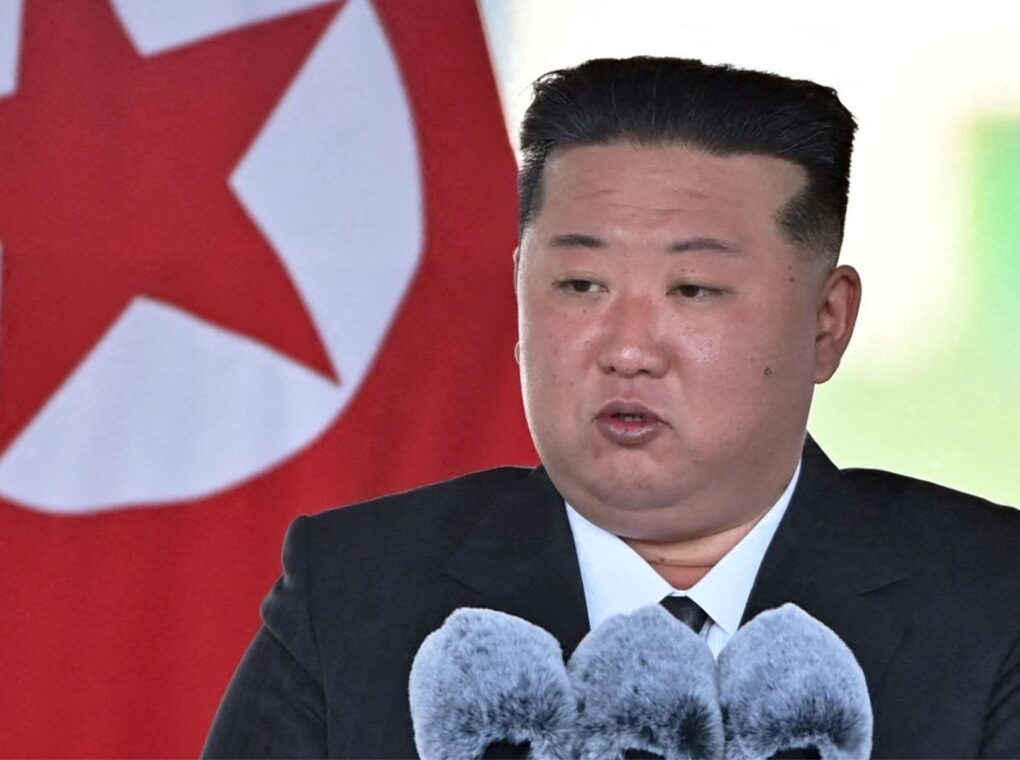In a rare public admission of a military mishap, North Korean leader Kim Jong Un expressed intense dissatisfaction following the failed launch of a new naval destroyer at the Chongjin shipyard. The incident, which resulted in considerable damage to the freshly constructed vessel, took place in Kim’s presence and has triggered serious political and military scrutiny within the reclusive nation.
State media reported that the 5,000-ton-class warship, touted as a symbol of North Korea’s expanding naval ambitions, suffered damage to its hull during a botched launch on Wednesday. According to the Korean Central News Agency (KCNA), the vessel lost balance as a support structure gave way prematurely, causing the bottom section to sustain damage. Specifics regarding the nature of the malfunction or the extent of the injuries, if any, were not disclosed.
Kim Jong Un was visibly angered by what he labeled a “grave error” stemming from “utter carelessness and scientific recklessness.” He criticized the military leadership, researchers, and shipyard managers, describing the failure not merely as a technical setback but as a political embarrassment with implications for the state’s dignity. A high-level meeting of the ruling Workers’ Party has been scheduled for late June, where Kim intends to hold those responsible accountable.
Satellite imagery released by commercial space firms confirmed the vessel had tipped over post-launch, resting partially submerged and draped in blue tarpaulin. South Korean defense officials corroborated that the damaged destroyer remains listing in the harbor, and initial assessments suggest it belongs to the same class as the Choe Hyon, North Korea’s most sophisticated warship unveiled just weeks ago.
Named after a renowned Korean independence fighter, the Choe Hyon represents North Korea’s strategic shift towards extending its naval reach and reinforcing its nuclear deterrent. Armed with both cruise and ballistic missiles capable of carrying nuclear payloads, the ship is part of a broader effort to challenge perceived hostilities from the United States and its regional allies. Kim previously hailed the destroyer as a transformative asset for the country’s military and had overseen its first missile test from the deck.
Analysts note that the public acknowledgment of such a failure is uncharacteristic of the North, indicating the importance Kim places on modernizing the navy. Professor Moon Keun-sik, a maritime expert at Hanyang University in Seoul, speculated that North Korea’s relative inexperience with vessels of this scale and the urgency to launch may have contributed to the incident.
Prior to this failure, imagery and analysis from research group 38 North indicated that the Chongjin yard had been preparing for a side-launch method—uncommon in North Korea. This approach may have played a role in the accident. Previous launches, including the Choe Hyon, used a floating dry dock for deployment.
Adding further weight to suspicions of external influence, South Korean officials have suggested that Russian expertise may have been involved in the destroyer’s construction, reflecting growing military ties between Moscow and Pyongyang. This cooperation reportedly extends to North Korea supplying equipment—and even troops—to assist Russia’s actions in Ukraine.
The shipyard incident was soon followed by a test launch of several cruise missiles from a location roughly 300 kilometers south of Chongjin. Analysts believe these launches were likely a calculated move to reassert strength and deflect attention from the naval mishap.
Kim has consistently framed the country’s weapons development as a necessary measure to counter external threats. He has recently indicated that the development of a nuclear-powered submarine would be a key next step in this strategic trajectory.
Despite its underdog status in regional naval power dynamics, North Korea’s efforts to enhance its maritime capabilities continue to raise concerns among neighboring countries and international observers alike.
